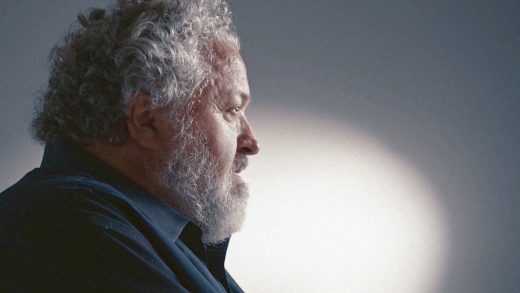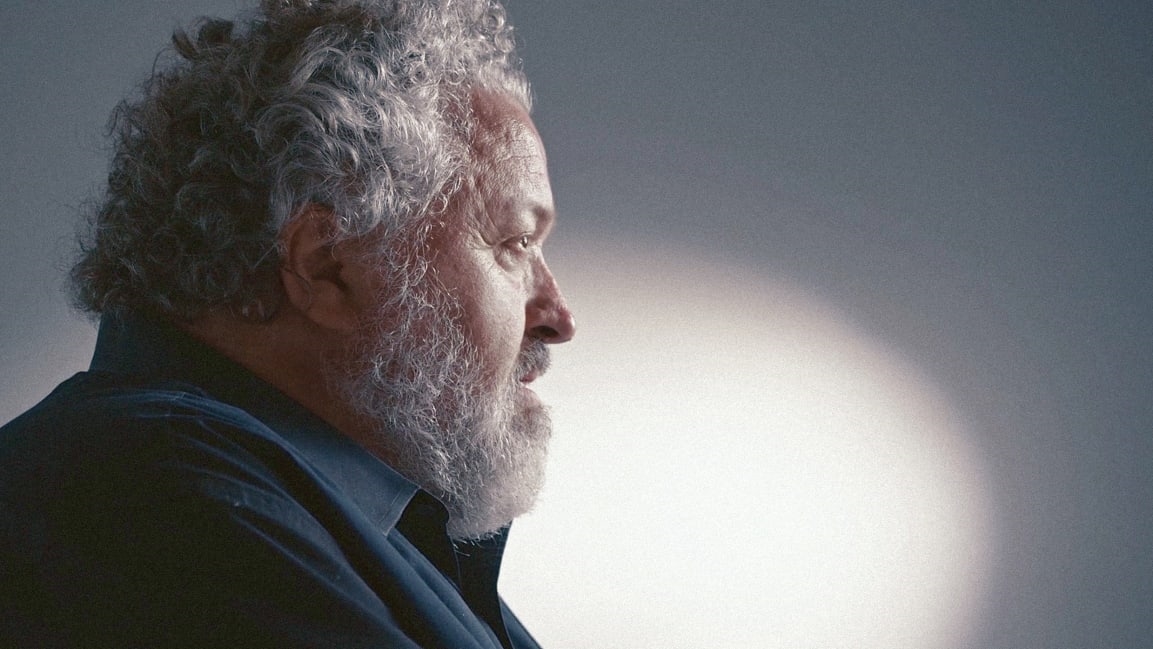All designers are futurists: Why Bruce Mau still believes design can change the world
The documentary, filmed over about three years and directed by Benji and Jono Bergmann, offers a retrospective of Mau’s life and career so far. It uses some of the designer’s biggest projects to showcase his wide-reaching, fundamentally optimistic view of design as a global change agent.
But his beginning was rather small by comparison. Mau, 61, grew up in the remote mining town of Sudbury, Canada. Surrounded by forests, design was remote, until he went to Ontario College of Art & Design for post-secondary school (his studio would later design its logo). After a brief time in Pentagram’s London office, Mau left to pursue projects of his own: S, M, L ,XL, an architectural tome developed with renowned architect Rem Koolhaas; Coca Cola’s “Live positively” sustainability platform; a commission to redesign the holy city of Mecca; a commission to rebrand Guatemala; his 20,000 square foot exhibition Massive Change about the future of design. Last summer, Mau released his latest book, MC24, which offers 24 principles to inspire massive change.
The truth is Mau can’t help but see design from a macro perspective. The design consultancy he founded in 2010 with his wife Bisi Williams, who studied journalism, is literally called Massive Change. For Mau, design isn’t just about color theory or kerning. At its most fundamental level, it’s an articulated strategy that can be applied to virtually anything.
Here, we discuss how Mau and Williams’s personal lives impacted their design philosophy, how design can affect change, and where its limits lie.
The documentary offers such a macro perspective of Bruce’s work. How has your personal experience shaped your views on design?
BM: When I was first starting out in design I didn’t go into a city until I went to college. So it was quite a break from my life on the farm. I remember going to the city for the first time for my college interview and being blown away by this new experience. I couldn’t see the connection between my life on the farm and my life in the city. I was quite deliberate to make a new life, to create a new world for myself in this new context and really escape the farm and that way of life.
It wasn’t until quite recently that I began to see how important that experience was for me as a designer. Partly because where I grew up was essentially lawless. We built houses and barns, and we did all kinds of things. No one knew how to do it, and no one got a permit to do it. You just figured out how to do it. And if you wanted something to happen, you made it happen. You got organized and you inspired other people to join you. That is where I work every day. I help people get organized and do things in the world.
That unregulated space was so important to how I think at work. I think without the boundaries that most people grow up with. I naturally think holistically and seamlessly. I think in an open way, and it comes from that experience.
How do you define design?
BM: Design is the ability to imagine a future and systematically execute that vision. So if you think about what all designers do, they’re all futurists. They’re all thinking about what’s going to happen. They’re going to make something new happen in the world. They’re all trying to make the world a better place. I’ve yet to meet a designer who wakes up in the morning thinking, “I think we could do something worse.” That’s not our mandate. That ability to create a vision is one of the most powerful tools that a designer has. We don’t really understand how powerful it is—it’s an incredible power to create the future by showing somebody what it looks like.
BW: Even just giving it form in either 2D or 3D so people can see it, touch it, feel it, and then move on to the next thing, that was the draw for me. He’s a design background, I’m a humanities background, and my family has medical and science-related backgrounds. So we envision things, we think of things, but it’s different.
One of the things I said to Benji, I said, “You need to go to Sudbury to understand the leap.” It’s quantum. To go from there and to be designing the master plan for Mecca—it is not normal. The special thing about Bruce is the very fact that there were no boundaries.
In Canada, we have universal education. So Bruce’s family may not have been [able to send him to college], but there was the means for him to go. The catalyst is that you bet on everyone, even on that kid on the last farm for thousands and thousands of hectares of forest. He can contribute this payback a million fold.
So you and Bruce are multidisciplinary designers. You’ve worked across branding, graphics, experiences, and environmental design, just to name a few. What are you most proud of?
BW: I love our work for Guatemala [a 2004 campaign to reinstall a sense of optimism among Guatemalans]. It was a real learning, humbling, amazing experience that took us well out of our comfort zone. It’s still ongoing. The work is real. The people are real and the problems are real. That was life-changing in so many ways.
My other favorite project is Massive Change. That’s when I really understood the power of design, the power of listening, and empathy, and applying the full strength of talent to a real serious problem.
BM: The Zone [Books] project was really important. For about 20 years, I designed everything they produced. They have one designer to do the whole body of work and it produced a cultural identity, even though we were quite small. The most important thing was that they were intellectual partners. They told me that my work was content.
They’re the ones who said, you’re an author and we’re going to list you on the book on the book with other authors. It was the first time that they shifted my work from the back of house support of graphic design to authorship and really saw it as a practice in a public way. That was quite transformational. That led to me becoming an author. It’s how [I started my career] in the first place, because the first project was about the contemporary city and Sanford Kwinter was one of the editors. I’m doing an event with Sanford at South by [Southwest]. We’ve been working together since ’84. 35 years. A long time.
[The project] started an investigation of the concept of pantheism. It was thinking about objects as a living thing. So imagine, instead of doing an illustration of a city, you’re going to do a model of a city that behaves like a city, creating something that resonates and lives and produces the life of a city in our book objects. That was the first introduction into the concept of life-centered design. We didn’t have it so clearly articulated, but it was exploring that idea. We’ve been working at that for the duration.
Are there any projects that you regret or that didn’t turn out as you expected?
BM: There are few real disasters. One of the worst disasters of my work was winning the Downsview Park. Rem [Koolhaas] and I did it together as a conceptual provocation called Tree City. [But] what we were doing was so radical that they had no budget to do it. It’s a kind of thing where you’re planting six-inch trees, so it’s going to take a generation for it to look anything like what we imagined, but it’s starting to. One of the things I say to my daughters all the time is you can’t win if you’re not in the game. So as long as we did it, it eventually starts to look like what it’s supposed to do. But as a process, it was a nightmare.
BW: But the idea is when it becomes crystal clear for Bruce. Sometimes it’s 18 months, sometimes it’s 18 years, but eventually, you get there. I think what that proves is process and methodology put together over these years, right? To really live the empathy at the core, to really care about the end user, to really care about the environment, to just care.
You need to use different techniques from all disciplines to be able to solve a complex problem. Which is why we have no problem working across disciplines and in fact, insist on it. I think it’s part of the new way of designing. And so that’s why I say Massive Change was catalytic.
Bisi, can you talk a little bit about how you think design as a field has evolved?
BW: It used to be about what things look like—fancy objects, cars, clothes, shoes. Even though there’s a rigor, you don’t show the process. The real turning point was the problems got weirder and harder to solve. You need different intelligence to solve these problems. You can’t solve things formally the way that you did; you can’t be so, so rigid. Bruce really cracked it for me. He’s like, design is like DNA. DNA is like design. If you think about the double helix, design is at the center of everything. When you realize that it’s the responsibility of designers, and the implications of what you do may have repercussions on the other side, the profession needs to think differently.
It’s not that design will save the world. It can help. And what does that do? Designers have the ability to curate and cull, shape and edit.
A tenet of design in the 2010s, especially design for social good, was that it’s a universal problem solver. But since then, there’s been an acknowledgement that designers can only do so much on their own. What are design’s limits?
BM: There aren’t really limits if you take the right approach and the right process. Life-centered design starts from the idea that this problem cannot be excised from its context. Which if you think about the unquestioned human-centered design methodology, it really misses the big picture, misses the fact that it’s an ecology, it’s an economy, it’s a complex system and you have to begin to work in context and not as a discrete object. I think that most design still is undertaken as an object-oriented methodology. We try to make the brief as tight as possible, as discreet an entity as possible.
That is not reality. The reality is that the problem is an open, interconnected thing that involves the community and the rest of life. When we fail to [recognize] that, we design for failure because we can’t possibly contemplate all the implications of what we’re doing, because they’re off the table. There are externalities and we consider them external to the problem. Life-centered design basically says, put that object back into the context.
You need a manifesto, not a brief. You need a more complex document of what you’re trying to accomplish that takes into account the inevitable failure, the limitations, the people involved, the malfeasance, the competition, the living things that are going to be killed by this way of working. We have to think about our work in a bigger context. When we start to do that, it’s very demanding. You can’t do it with the old design practices. So you need a different kind of person, a different kind of team, or a different kind of client who is able to see the complexity and willing to engage the complexity. I think that takes us to a very different place.
(49)



